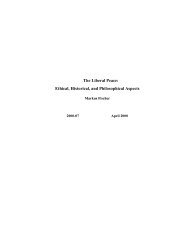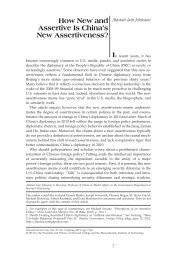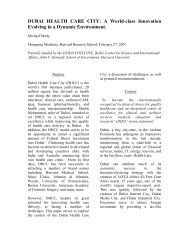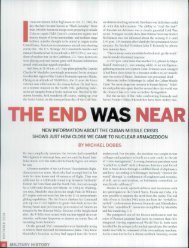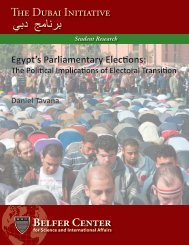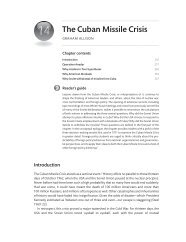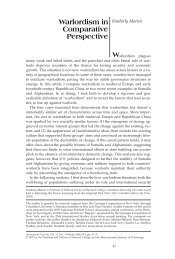The Promise and Problems of Pricing Carbon: - Belfer Center for ...
The Promise and Problems of Pricing Carbon: - Belfer Center for ...
The Promise and Problems of Pricing Carbon: - Belfer Center for ...
You also want an ePaper? Increase the reach of your titles
YUMPU automatically turns print PDFs into web optimized ePapers that Google loves.
THE PROMISE AND PROBLEMS OF PRICING CARBON BELFER CENTER 2011-12<br />
(<strong>and</strong> decline in the relative gas-coal price) in 2009 <strong>and</strong> 2010 by dispatching more electricity from<br />
gas plants that resulted in lower carbon dioxide (CO2) emissions <strong>and</strong> the lowest share <strong>of</strong> U.S.<br />
power generation by coal in some four decades (U.S. Energy In<strong>for</strong>mation Administration, 2009).<br />
Longer-term evaluations <strong>of</strong> the impacts <strong>of</strong> energy prices on markets have found that higher<br />
prices have induced more innovation – measured by frequency <strong>and</strong> importance <strong>of</strong> patents – <strong>and</strong><br />
increased the commercial availability <strong>of</strong> more energy-efficient products, especially among<br />
energy-intensive goods such as air conditioners <strong>and</strong> water heaters (Newell, Jaffe, <strong>and</strong> Stavins,<br />
1999; Popp, 2002).<br />
Cap-<strong>and</strong>-Trade Systems<br />
A cap-<strong>and</strong>-trade system constrains the aggregate emissions <strong>of</strong> regulated sources by<br />
creating a limited number <strong>of</strong> tradable emission allowances – in sum equal to the overall cap –<br />
<strong>and</strong> requiring those sources to surrender allowances to cover their emissions (Stavins, 2007).<br />
Faced with the choice <strong>of</strong> surrendering an allowance or reducing emissions, firms place a value on<br />
an allowance that reflects the cost <strong>of</strong> the emission reductions that can be avoided by surrendering<br />
an allowance. Regardless <strong>of</strong> the initial allowance distribution, trading can lead allowances to be<br />
put to their highest-valued use: covering those emissions that are the most costly to reduce <strong>and</strong><br />
providing the incentive to undertake the least costly reductions (Montgomery, 1972; Hahn <strong>and</strong><br />
Stavins, 2012).<br />
In developing a cap-<strong>and</strong>-trade system, policymakers must decide on several elements <strong>of</strong><br />
the system’s design. Policymakers must determine how many allowances to issue – the size or<br />
level <strong>of</strong> the emission cap. Policymakers must determine the scope <strong>of</strong> the cap’s coverage: identify<br />
the types <strong>of</strong> greenhouse gas emissions <strong>and</strong> sources covered by the cap, including whether to<br />
regulate upstream (based on carbon content <strong>of</strong> fuels) or downstream (based on monitored<br />
emissions).<br />
After determining the amount <strong>of</strong> allowances <strong>and</strong> scope <strong>of</strong> coverage, policymakers must<br />
determine whether to freely distribute or sell (auction) allowances. Free allocation <strong>of</strong> allowances<br />
to firms could reflect some historical record (“gr<strong>and</strong>fathering”), such as recent fossil fuel sales.<br />
Such gr<strong>and</strong>fathering involves a transfer <strong>of</strong> wealth, equal to the value <strong>of</strong> the allowances, to<br />
existing firms, whereas, with an auction, this same wealth is transferred to the government. With<br />
an auction, the government would, in theory, collect revenue identical to that from a tax<br />
6




